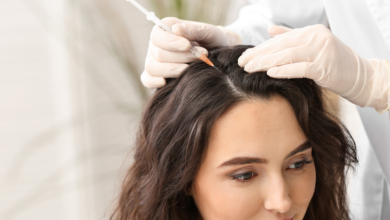
In the world of cosmetic surgery, otoplasty stands out as a remarkable procedure aimed at enhancing the appearance of the ears. With a keen focus on achieving harmony and balance, otoplasty offers individuals the opportunity to craft the perfect ear. Through this transformative surgery, patients can achieve symmetrical, proportionate ears that complement their overall facial aesthetics. With the ultimate goal of boosting self-confidence, otoplasty has become increasingly popular, and it is no wonder why individuals are seeking this procedure to achieve the perfect ear they desire.
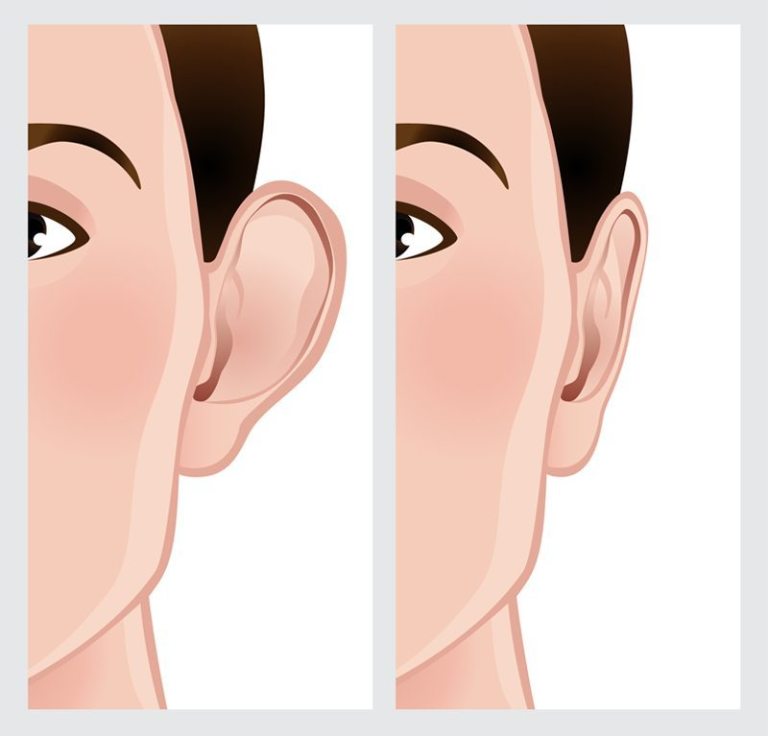
Understanding Otoplasty
Definition of Otoplasty
Otoplasty, also known as ear surgery, is a cosmetic procedure performed to reshape and enhance the appearance of the ears. It is commonly used to correct issues such as prominent or misshapen ears, as well as to address congenital deformities or injuries. Otoplasty can greatly improve the aesthetic appeal of the ears, resulting in increased self-confidence and improved facial harmony.
Why People Choose Otoplasty
There are various reasons why individuals choose to undergo otoplasty. The most common motivation is to correct prominent or protruding ears, which can cause self-consciousness and embarrassment. Prominent ears can affect an individual’s self-esteem, particularly during childhood and adolescence when teasing and bullying may occur. Otoplasty can help to reshape the ears and bring them into better proportion with the rest of the face, resulting in a more balanced and attractive appearance.
Additionally, individuals who have suffered from congenital deformities, such as microtia (underdeveloped ear) or anotia (no ear), can greatly benefit from otoplasty. The procedure can reconstruct the ear and help these individuals achieve a more natural and symmetric appearance. Furthermore, otoplasty can also address issues such as ear asymmetry, irregular ear shape, or injuries that have affected the ears.

Common Concerns Addressed by Otoplasty
Otoplasty can effectively address a range of concerns related to the appearance and structure of the ears. Some common concerns addressed by otoplasty include:
- Prominent or protruding ears: Otoplasty can correct ears that stick out excessively from the head, bringing them closer to the scalp and improving facial symmetry.
- Misshapen ears: Otoplasty can reshape ears that have an abnormal or irregular structure, resulting in a more aesthetically pleasing appearance.
- Congenital deformities: Otoplasty can correct underdeveloped or absent ears, providing patients with a reconstructed ear and enhancing their overall appearance and self-esteem.
- Asymmetrical ears: Otoplasty can address ear asymmetry, ensuring that both ears are in balance and harmony with each other and the face.
Who Can Benefit from Otoplasty
Anyone who is dissatisfied with the appearance or structure of their ears may be a candidate for otoplasty. This procedure is suitable for both children and adults, although it is more commonly performed on children between the ages of 4 and 14, before the ears reach full development. However, adults who have been living with prominent or misshapen ears can also benefit from otoplasty and achieve the desired ear aesthetics.

Preparing for Otoplasty
Consultation with the Surgeon
Before undergoing otoplasty, it is crucial to schedule a consultation with a qualified plastic surgeon. During this consultation, the surgeon will assess the individual’s goals and expectations for the procedure, examine the ears, and discuss the various aspects of the surgery. This is also an opportunity for the patient to ask questions and address any concerns they may have.
Evaluation of Ear Structure
The surgeon will evaluate the structure of the ears, taking into consideration their size, shape, symmetry, and position in relation to the head. This evaluation helps determine the specific issues that need to be addressed during the otoplasty procedure.
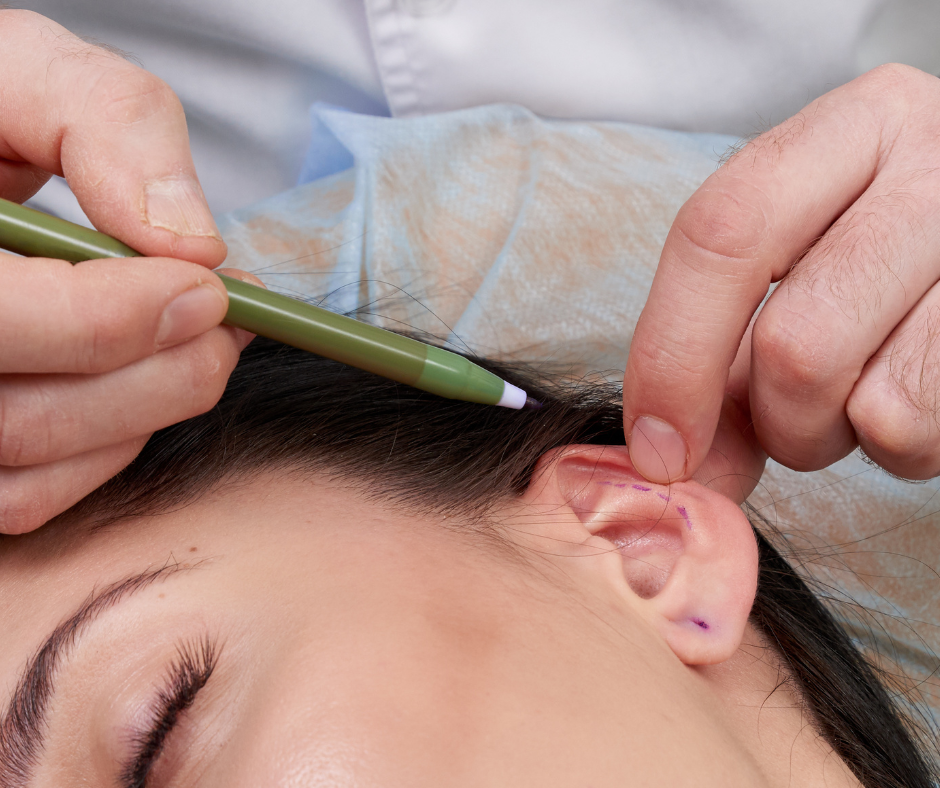
Medical and Health Considerations
It is essential for individuals considering otoplasty to disclose their complete medical history and any current health conditions or medications they are taking. This information will help the surgeon assess the individual’s suitability for the procedure and ensure their safety during the surgery. Certain medical conditions or medications may need to be managed or adjusted before undergoing otoplasty.
Understanding the Procedure
During the consultation, the surgeon will explain the otoplasty procedure in detail, including the techniques used, the incision placement, the expected outcome, and the potential risks and complications. This comprehensive understanding of the procedure allows the individual to make an informed decision and manage their expectations accordingly.
Discussing Expectations and Possible Risks
Open communication between the patient and the surgeon is essential to achieving the desired results. The surgeon will discuss the patient’s expectations and determine if they can be realistically achieved through otoplasty. Additionally, the potential risks and complications associated with the procedure will be outlined to ensure the patient is fully aware of the possible outcomes.
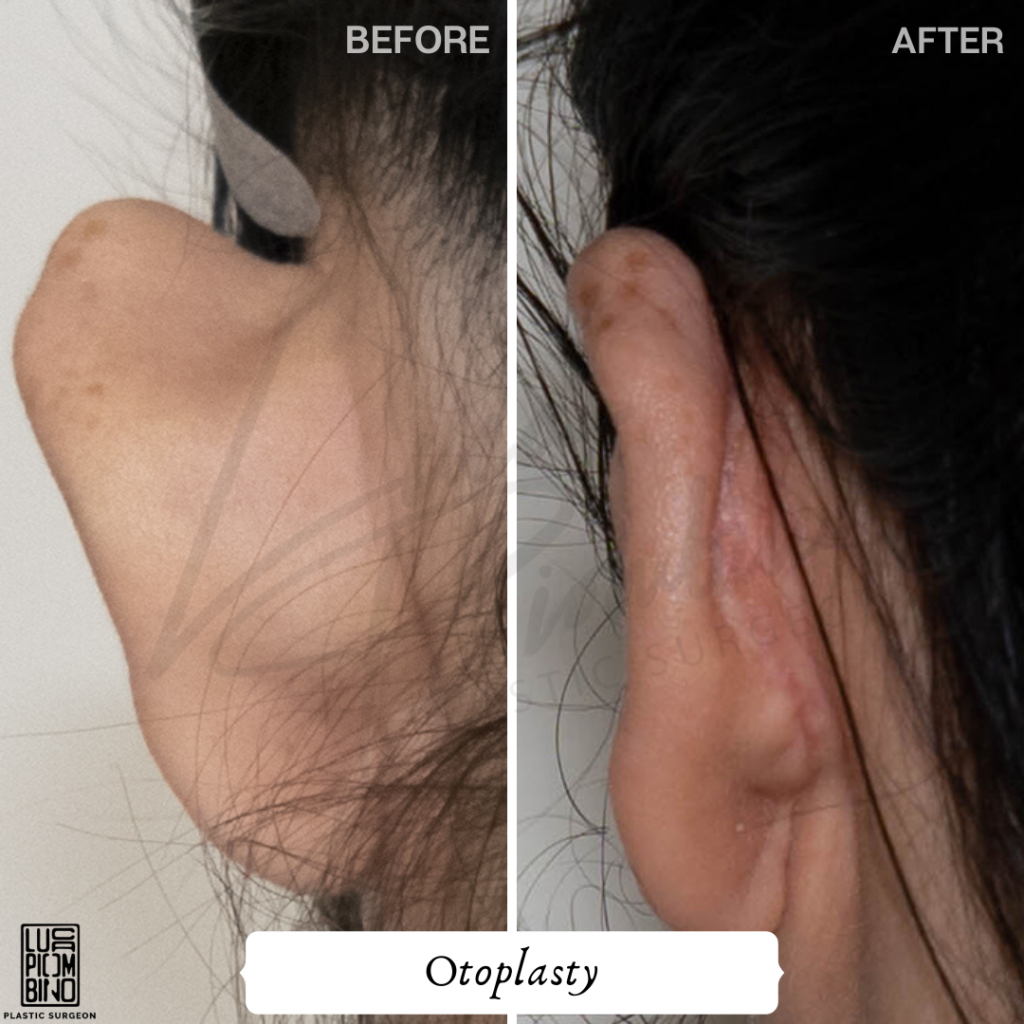
Techniques Used in Otoplasty
Traditional Otoplasty
The traditional otoplasty technique involves making an incision behind the ear to expose the underlying cartilage. The cartilage is then reshaped and sculpted to create the desired ear shape and position. Excess cartilage and skin may also be removed during this process. Once the necessary modifications are made, the surgeon will secure the cartilage in its new position using internal sutures. The incisions are carefully closed, resulting in minimal scarring.
Cartilage-Sparing Technique
The cartilage-sparing technique is a popular approach in otoplasty, particularly for children. With this technique, the surgeon uses sutures to reshape the cartilage without making any incisions or removing excess cartilage. This method allows for a more natural-looking and permanent correction of prominent ears, with minimal surgical intervention and faster recovery.
Non-Invasive Correction
For individuals with minor ear irregularities, non-invasive correction techniques may be used. These techniques involve the use of nonsurgical interventions, such as tissue molding and ear splints, to reshape the ears without the need for surgery. Non-invasive correction can be an effective option for individuals who do not require extensive reshaping or correction of their ear structure.
Combination Approaches
In some cases, a combination of techniques may be used to achieve the desired ear aesthetics. For example, a cartilage-sparing technique may be combined with tissue molding or splints to address specific concerns and achieve optimal results. The surgeon will determine the most appropriate techniques based on the individual’s ear structure and desired outcome.
The Otoplasty Procedure
Anesthesia
Otoplasty can be performed under local anesthesia combined with sedation or under general anesthesia, depending on the patient’s needs and the extent of the procedure. The surgeon will discuss the anesthesia options during the consultation and determine the most appropriate choice for the individual.
Incision Placement
The incisions for otoplasty are strategically placed to minimize scarring and ensure optimal results. In traditional otoplasty, the incisions are made behind the ear, where they are concealed within the natural creases and contours of the skin. In some cases, additional incisions may be made within the natural folds of the front of the ear if necessary.
Reshaping the Ear
Once the incisions are made, the surgeon will carefully access the underlying cartilage and reshape it according to the individual’s desired outcome. The cartilage may be sculpted, sewn, or rearranged to achieve the desired shape, position, and symmetry of the ears. Excess cartilage or skin may also be removed during this process.
Sutures and Dressings
After the necessary modifications are made, the surgeon will use internal sutures to secure the cartilage in its new position. External sutures may also be used to close the incisions, which will be carefully placed to minimize scarring and maintain natural contours. Once the sutures are in place, dressings or bandages will be applied to protect the surgical site and promote proper healing.
Duration of the Procedure
The duration of the otoplasty procedure can vary depending on the complexity of the case and the techniques used. On average, the procedure takes approximately two to three hours to complete. The surgeon will provide more accurate information regarding the expected duration during the consultation.
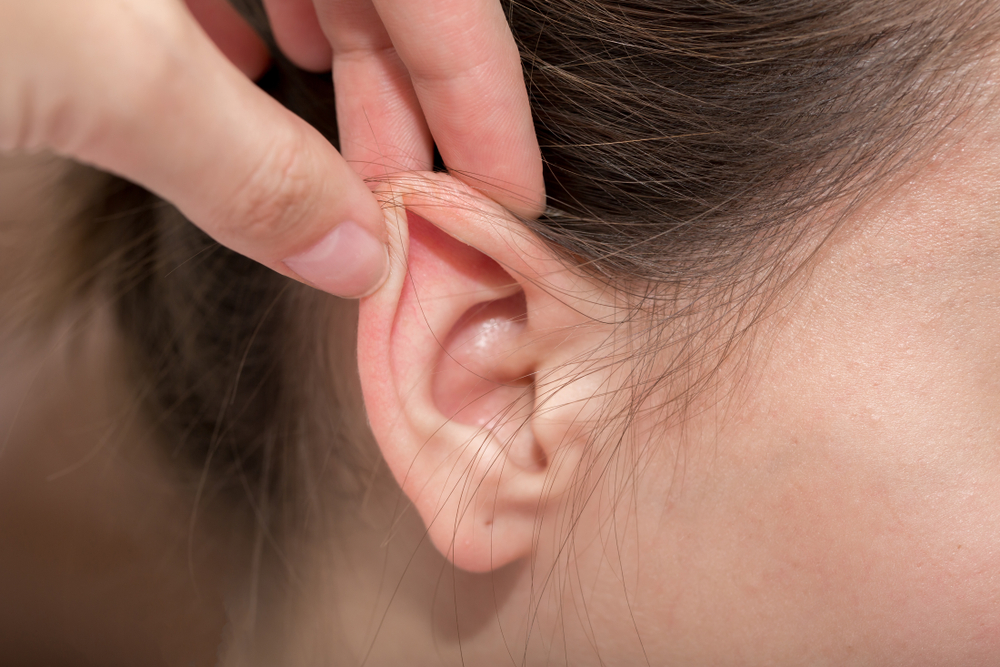
Recovery and Aftercare
Immediate Post-Operative Period
After the otoplasty procedure, the individual will be monitored in a recovery area until they are fully awake and stable. It is common to experience some discomfort, swelling, and bruising immediately following the surgery. Pain medication may be prescribed to manage any discomfort.
Managing Discomfort and Swelling
To minimize discomfort and swelling, the surgeon may recommend the use of cold compresses, pain medication, and keeping the head elevated during sleep. It is important to follow the surgeon’s instructions closely to ensure a smooth recovery process.
Follow-Up Visits
Follow-up visits with the surgeon will be scheduled to monitor the healing process, remove any sutures, and address any concerns or questions that may arise. These visits are essential to ensure that the ears are healing properly and that the desired result is being achieved.
Activity Restrictions
During the initial stages of recovery, it is important to avoid any activities that may put stress or pressure on the ears. This includes avoiding contact sports, swimming, or wearing any headgear that could interfere with the healing process. The surgeon will provide specific activity restrictions and guidelines based on the individual’s case.
Long-Term Care for Optimal Results
To maintain the results of otoplasty and ensure long-term satisfaction, it is important to follow the surgeon’s instructions for post-operative care. This may include wearing a headband or bandage at night to protect the ears while sleeping and avoiding any activities that may cause trauma to the ears. Routine follow-up visits will also be scheduled to monitor the long-term outcome and address any concerns that may arise.
Potential Risks and Complications
Bleeding and Infection
As with any surgical procedure, otoplasty carries the risk of bleeding and infection. The surgeon will take all necessary precautions to minimize these risks, including providing clear post-operative care instructions and prescribing appropriate antibiotics if necessary.
Scarring
While efforts are made to minimize scarring, some degree of scarring is inevitable with any surgical procedure. However, the incisions made during otoplasty are strategically placed to ensure that any scarring is discreet and concealed within the natural contours of the ears.
Asymmetry
Achieving perfect symmetry is a challenge in any cosmetic procedure, including otoplasty. While the surgeon strives to create balanced and symmetrical ears, there is a possibility of slight asymmetry. However, any asymmetry is typically minor and not noticeable to the casual observer.
Changes in Sensation
Temporary changes in sensation, such as numbness or tingling, may occur in the ears after otoplasty. However, these sensations typically improve over time as the ears heal, and full sensation is eventually restored.
Hematoma
In some cases, a collection of blood, known as a hematoma, may occur in the surgical area. This can cause increased swelling and discomfort. If a hematoma occurs, it may need to be drained to ensure proper healing.
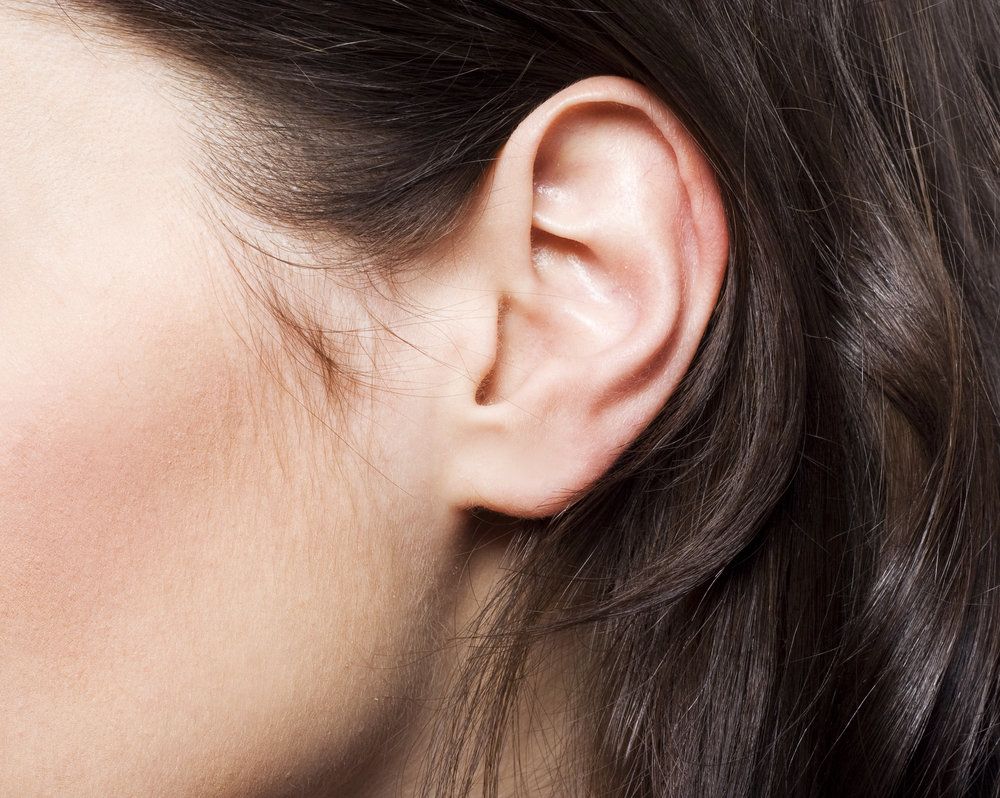
Results and Expected Outcome
Timeframe for Final Results
The final results of otoplasty are typically visible once the initial swelling subsides, which can take a few weeks to months. However, it is essential to note that the healing process varies from individual to individual, and the final results may continue to improve over time.
Satisfaction Rates
Overall, otoplasty has a high satisfaction rate among patients who have undergone the procedure. Many individuals report a significant improvement in the appearance of their ears and a boost in self-confidence following otoplasty.
Improvement in Ear Appearance
Otoplasty can effectively address various concerns related to the appearance of the ears, such as prominent or misshapen ears, asymmetry, or congenital deformities. The procedure can result in a more proportional and aesthetically pleasing ear shape, enhancing the overall facial harmony.
Boost in Self-Confidence
One of the significant benefits of otoplasty is the boost in self-confidence and improved body image that individuals often experience. By enhancing the appearance of the ears, otoplasty can help individuals feel more comfortable and confident in their own skin, positively impacting their social interactions and overall well-being.
Choosing a Qualified Surgeon
Researching the Surgeon’s Credentials
Selecting a highly qualified and experienced plastic surgeon is crucial for achieving safe and satisfactory results from otoplasty. It is essential to thoroughly research the surgeon’s credentials, including their education, training, certifications, and affiliations with reputable medical organizations. Patient reviews and testimonials can also provide valuable insights into the surgeon’s skills and patient satisfaction.
Reviewing Before and After Photos
Reviewing before and after photos of the surgeon’s previous otoplasty patients can give you a better understanding of their expertise and the potential outcomes of the procedure. This visual representation can help you assess if the surgeon’s aesthetic style aligns with your desired results.
Reading Patient Reviews
Reading patient reviews and testimonials can provide valuable insights into the surgeon’s bedside manner, professionalism, and overall patient satisfaction. It is important to consider a range of reviews to get a comprehensive understanding of the surgeon’s reputation and the experiences of previous patients.
Consultation and Evaluation
Scheduling a consultation with the surgeon is an essential step in the decision-making process. During this consultation, you can ask questions, address any concerns, and evaluate the surgeon’s communication skills and ability to understand your goals and expectations. The consultation will also provide an opportunity for the surgeon to assess your case and recommend the most suitable treatment plan.
Trust and Comfort
Trust and comfort are essential factors when choosing a surgeon for otoplasty. It is important to select a surgeon with whom you feel comfortable and have a good rapport. Open communication, trust in the surgeon’s abilities, and confidence in their judgment are crucial for a positive surgical experience.
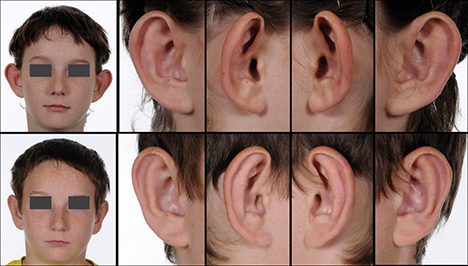
Costs and Insurance Coverage
Factors Affecting Cost
The cost of otoplasty can vary depending on several factors, including the surgeon’s expertise and reputation, the complexity of the case, the techniques used, the geographical location of the practice, and the facility fees. The cost typically includes the surgeon’s fee, anesthesia fees, facility fees, and any necessary post-operative care.
Health Insurance Coverage
Otoplasty is generally considered a cosmetic procedure and is not covered by health insurance. However, in some cases, insurance may provide coverage if the procedure is performed to correct a congenital deformity or an injury. It is advisable to check with your insurance provider to determine if coverage is available and what documentation is required for approval.
Payment Options and Financing
Many plastic surgery practices offer various payment options to help make otoplasty more affordable. These options may include payment plans, financing through third-party providers, or accepting major credit cards. It is important to discuss the available payment options with the surgeon’s office to find a solution that works best for you.
Conclusion
Otoplasty is a safe and effective procedure that can transform the appearance of the ears, improving facial harmony and boosting self-confidence. By addressing concerns such as prominent or misshapen ears, asymmetry, or congenital deformities, otoplasty can create a more balanced and aesthetically pleasing ear shape. The procedure can be performed on both children and adults, with lasting results that can positively impact an individual’s overall well-being. When considering otoplasty, it is important to choose a qualified, experienced surgeon who understands your goals and can guide you through the process to achieve optimal results.




